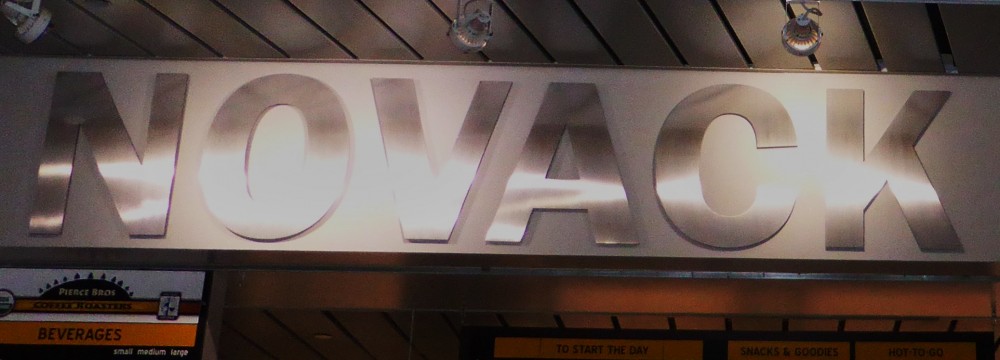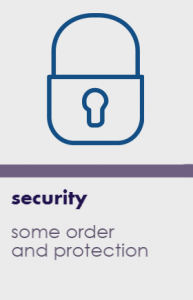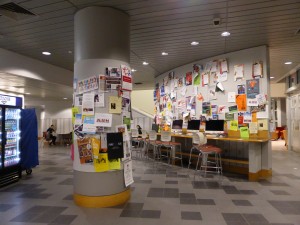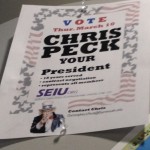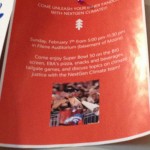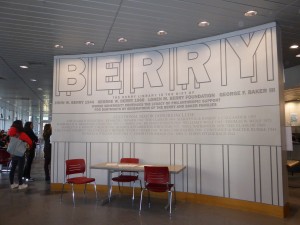Publicity
For the most part, Novack cafe conforms to Fleming’s definition of publicity. It is open and accessible, and encourages freedom of speech and the expression of political opinions. In terms of accessibility, as I have mentioned in the other sections of this website, Novack cafe is one of a few areas on campus that is open 24 hours a day, and there is no time limit for how long a student is allowed to use the space. There are also no conditions, such as purchasing food, for using the space and while some campus buildings require the use of an ID card to enter, Novack cafe does not. The attached study rooms usually require students to reserve a time in advance, but this is not necessary for the main part of the cafe: as long as there are empty chairs, it is available for use. It is designed in such a way that anyone can use the space at any time in whatever way they want to within reason.
Because Novack cafe is located so close to the busy thoroughfare that runs through the Baker-Berry Library, it is a very public space. The large window that occupies an entire wall makes the space feel open and exposed to a certain extent.
In terms of freedom of speech, Novack cafe isn’t particularly designed to hold political or ideological debates, and while conversation is both allowed and encouraged by the cafe’s layout, not every conversation is necessarily an argument. However, it does still provide a forum for public opinion. The curved wall closest to the stairs, as well as the pillar next to it are usually coated in flyers, as shown in the image below.
These may include notices about fundraisers, upcoming classes, wanted ads for tutors, research participants, and other positions, and even political propaganda. For example, some political fliers still remain due to the recent New Hampshire primary. Below, I highlight some examples of flyers that express varying political opinions and serve as a form of written discourse.
- This flyer advertises a fundraiser for democratic presidential candidate Bernie Sanders. A few weeks ago, there were also flyers from the Hillary Clinton campaign on the pillar, creating a kind of silent debate./ pc: author
- Advertisement persuading viewers to vote for a specific Union President./ pc: author
- Nextgen Climate (student environmental and political group) flyer advertising a superbowl party with discussion about environment and “climate justice” afterwards./ pc: author
The fliers, also found on other pillars at the base of the stairs and on the bulletin boards where Carson Hall attaches to Berry Library, (opposite of Novack) are likely placed here for strategic reasons. Multiple people pass by and through Novack each day, and in my diagram in the section on Heterogeneity and Density, the fliers would be found in the center of the red and yellow circle that marks a heavy to moderate flow of people.
It makes sense to post the fliers where they will be seen by the most people. Even though they aren’t spoken words, Novack’s centrality and publicity allow it to amplify student voices and encourage thought, if not open conversation about different opinions. In comparison to other dining areas on campus, such as the Class of 1953 Commons, Collis Cafe, and the Courtyard Cafe, Novack offers a greater variety of free student publications, another means of disseminating the opinions of groups of individuals within the Dartmouth Community. Often, student groups will set up tables (usually “borrowed” from Novack), as indicated by the dashed rectangles at the bottom right of my diagram (a high-traffic zone), directly outside of the cafe, also as a means of using this visibility. However, as there are flyers directly outside of Novack as well, it might be argued that the benefit of publicity comes from the stairs and hallway in this case rather than the cafe. However, the cafe certainly does attract more passers-by than the stairway alone.
Security
Novack creates a sense of security via its small size and the large wall (pictured below) that partially separates the cafe from the main stream of activity. Although Novack is easily accessible, one still has to walk around this large obstacle in order to enter the space. The only entrance that is directly within Novack is not connected to any other buildings nor does it lead to any main paths. Rather, it connects to the side of the building, and there is not much reason for many people to use it. Thus, traffic mainly only comes into Novack from one direction, and as shown in my diagram from the section on the flow of people, the heavier traffic stays mainly confined to the line for food. This leaves a large portion of the seating area relatively calm and undisturbed. Additionally, some seats, such as those next to the condiment table, are tucked into enclaves that add an additional layer of privacy. Jutting pillars along the glass wall opposite of the counter create indents of about 1-2 feet in depth that seem to serve a similar purpose. A sense of security is important because in order for meaningful discourse to occur in a given space, individuals need to feel comfortable being there in the first place. One is unlikely to share their opinions in a place that they feel the need to avoid, and they are unlikely to be friendly if they feel the need to hide or defend themselves as they might in a disorderly crowd or a place with excessive exposure.
To Fleming’s idea of security, I might add that parts of Novack (namely the seating area) have elements of comfort and leisure. Different from Fleming’s public streets, in which most people are trying to get from one place to another, and the weather can sometimes be unpredictable and unpleasant, Novack is designed as a place where people can comfortably stay for long periods of time during any time of the year. Due to air conditioning, the space is kept at a consistently mild temperature. Additionally, Novack offers amenities such as electrical outlets, food, coffee, computers, and comfortable seating. Thus, Novack is not only a space where conversations can take place, but where people actually want to stay and converse, or at least be in a cooperative environment with others for extended lengths of time. The comforts that Novack offers draw people into the space and make random encounters possible there. If Novack were an uncomfortable space, there would be little reason for so many members of the student body to go there. Comfort is related to the idea of security, because security also results in an environment that people are willing to stay in long enough to express their opinions properly, listen to the opinions of others, or share friendly exchanges in a low-pressure environment.

